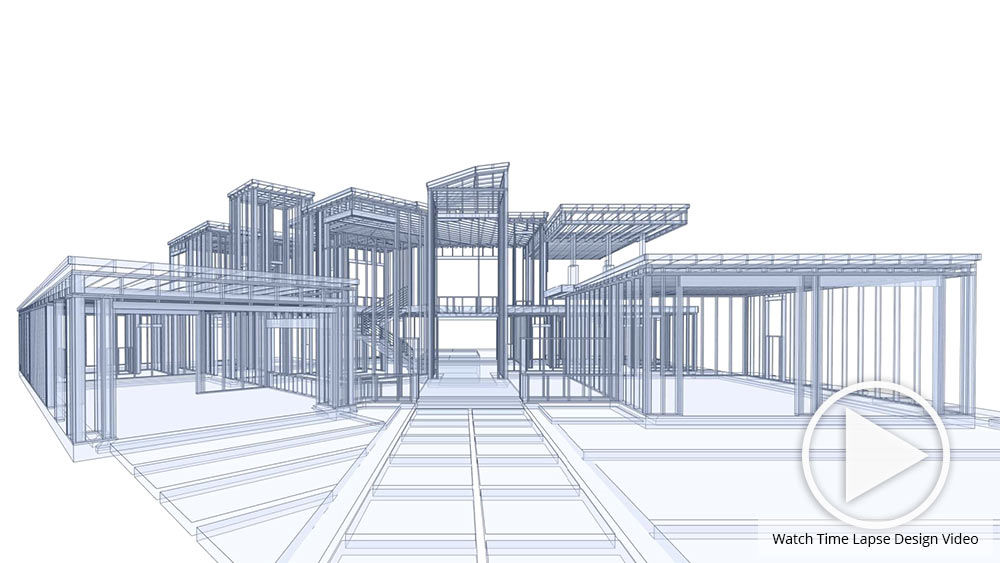How CDA Architects Include Eco-Friendly Practices in Architectural Projects
How CDA Architects Include Eco-Friendly Practices in Architectural Projects
Blog Article
Understanding the Collaborative Refine In Between Engineers and Designers in Modern Building And Construction Projects
The collective procedure in between designers and designers is necessary in modern construction tasks, as it harmonizes design intent with engineering usefulness. Checking out these dynamics discloses insights that might dramatically influence job results and overall industry standards.
The Importance of Partnership
The collective synergy between architects and designers is necessary for the effective realization of any kind of building job. This partnership combines unique experience and point of views, allowing the combination of innovative style with functional engineering remedies. By working with each other, engineers and designers can make sure that a project not just fulfills visual and functional demands but additionally abides by safety, sustainability, and monetary restraints.
Collaboration promotes a shared vision, assisting in the alignment of objectives and expectations from the start. This alignment is vital in resolving potential obstacles and mitigating dangers that could develop during the task lifecycle. A joint approach enables for the reliable allotment of sources, enhancing both time and price.
The importance of cooperation reaches the repetitive procedure of design and building and construction, where comments from engineers can inform architectural decisions, causing more viable and sustainable styles. Conversely, designers can influence engineers to assume artistically regarding just how to attain structural stability without jeopardizing creative intent. Ultimately, the joint relationship between architects and designers is not just useful; it is essential to the production of high-quality, functional, and cutting-edge developed environments that satisfy the requirements of culture.
Interaction Techniques and Tools
Reliable interaction techniques and tools are essential for fostering cooperation in between architects and designers throughout the task lifecycle. Establishing clear networks of interaction is essential to make sure that all staff member are lined up with project goals, timelines, and duties. Normal meetings, both in-person and virtual, offer chances for stakeholders to talk about progression, address concerns, and make educated decisions.

Furthermore, adopting collective interaction devices, such as Slack or Microsoft Teams, permits instantaneous messaging, documents sharing, and recurring discussions, promoting an extra agile feedback to emerging problems. Record management systems additionally play a crucial duty in arranging task paperwork, making sure that all group members have accessibility to the current info.
Shared Goals and Task Vision
A merged job vision serves as the structure for effective partnership in between engineers and designers (cda architects). This common vision not only straightens the efforts of both celebrations however additionally establishes a common structure for decision-making throughout the project's lifecycle. By verbalizing clear goals, stakeholders can properly browse the intricacies of modern-day building and construction tasks, guaranteeing that both visual and useful needs are fulfilled
Developing i loved this shared objectives involves open dialogue and an extensive understanding of each discipline's contributions. Architects usually focus on design intent, spatial relationships, and user experience, while engineers highlight architectural honesty, systems performance, and conformity with guidelines. When these perspectives are lined up, the result is a natural project that complies with both creative desires and technical usefulness.
In addition, a well-defined job vision fosters responsibility among team members, encouraging each participant to take possession of their role in attaining the preferred outcome. Routine check-ins and collaborative workshops can additionally reinforce this dedication, enabling modifications to be made as the project develops. Inevitably, a common vision not only enhances team effort but additionally raises the top quality of the last deliverable, resulting in successful task completion.
The Role of Modern Technology
Leveraging technology has ended up being necessary in boosting cooperation between designers and designers. Structure Info Modeling (BIM) stands out as a crucial innovation, permitting both designers and designers to develop thorough 3D versions that encapsulate layout intent and architectural integrity.
In addition, cloud-based systems make it possible for smooth cooperation, permitting task stakeholders to access and upgrade task information from anywhere. This fosters a culture discover this info here of openness and accountability, as changes can be tracked and examined in real-time. Furthermore, mobile applications more boost communication, offering on-site groups with prompt accessibility to task requirements and updates.
Emerging technologies such as man-made knowledge and machine knowing are likewise beginning to play a function in predictive evaluation, helping teams recognize possible concerns before they develop. Inevitably, the role of innovation in architecture-engineering partnership not just boosts process efficiencies yet additionally boosts innovation, causing more effective project results. By welcoming these technical advancements, architects and designers can make sure a more natural and efficient collaborative procedure throughout the construction lifecycle.
Study in Successful Partnerships
Countless study illustrate the profound effect of efficient partnerships between engineers and designers on job results. One remarkable instance is the partnership on the High Line in New York City City, where landscape designers, engineers, and metropolitan coordinators collaborated to transform a deserted rail line into a dynamic public park. This multidisciplinary approach not only improved the aesthetic top quality however additionally ensured architectural safety and environmental sustainability.

The Burj Khalifa in Dubai better demonstrates the significance of collaborative efforts - cda architects. The integration of architecture and design experience enabled the task group to achieve unprecedented heights while adhering to security regulations and aesthetic vision
These examples emphasize the value of interaction, count on, and shared objectives. In today's complex construction environment, such partnerships are important to navigating like this challenges and delivering projects that satisfy both functional and visionary objectives.
Verdict
Finally, the cooperation in between architects and designers is essential for the success of contemporary building and construction jobs. Effective communication techniques, a common project vision, and the combination of innovative modern technologies are vital elements that promote this partnership. By fostering a society of responsibility and leveraging tools such as Building Info Modeling (BIM), groups can navigate job complexities, making certain that aesthetic, useful, and sustainability purposes are achieved. Inevitably, this harmony brings about innovative and successful job outcomes.
Report this page